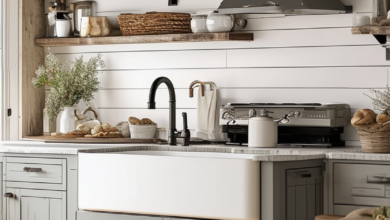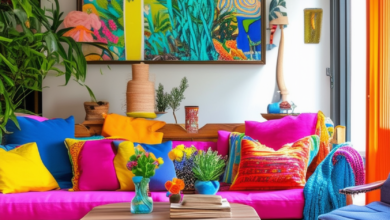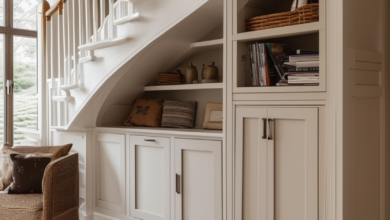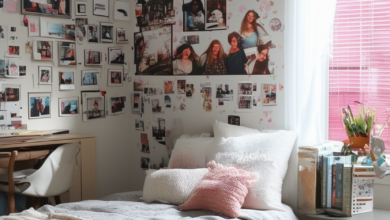Making the Most of Your Small Living Space: Creative Design Ideas
Living in a small space doesn’t have to mean sacrificing style and functionality. In fact, when it comes to designing a small living space, there are countless creative solutions that can help you make the most out of every square inch. From multifunctional furniture to clever storage solutions, there are plenty of ways to transform your small space into a stylish and functional oasis.
In this article, we’ll explore some innovative design ideas that can help you maximize the potential of your small living space. Whether you’re looking to create a cozy nook in a studio apartment or make the most of a cramped bedroom, these creative solutions will inspire you to think outside the box and make your small space feel like a home. So, if you’re ready to unleash your inner designer and make the most of your small living space, keep reading for some inspiration and ideas that will help you create a space that’s both stylish and practical.
Utilizing Multi-Functional Furniture in Small Living Room Design
In a small living room, maximizing space is key to creating a functional and stylish environment. One way to achieve this is by utilizing multi-functional furniture pieces that serve more than one purpose. For example, a sofa bed can be used for seating during the day and then transformed into a bed for overnight guests. This not only saves space but also adds versatility to the room’s design.
When selecting multi-functional furniture for your small living room, consider pieces that offer storage solutions as well. Ottomans or coffee tables with hidden compartments can help keep clutter at bay and make the most of limited storage space. Additionally, wall-mounted shelves or foldable tables can provide extra surface area when needed and be tucked away when not in use.
Another creative design idea for small living rooms is to incorporate furniture that can be easily rearranged to suit different needs. For example, modular seating arrangements that can be reconfigured to accommodate different activities such as watching TV, socializing, or working from home. This flexibility allows for a dynamic and customizable living space that can adapt to the changing needs of its occupants.
Maximizing Vertical Space with Smart Shelving Solutions for Small Living Room Design
In a small living room, maximizing vertical space is key to creating a functional and stylish design. Smart shelving solutions are the perfect way to make the most of your limited space. By utilizing vertical storage options, you can keep your living room organized and clutter-free while also adding visual interest to the space.
One creative design idea is to install floating shelves above the seating area to display books, plants, or decorative items. These shelves not only provide extra storage space but also draw the eye upwards, making the room feel larger and more open. Another option is to use wall-mounted cabinets or cubbies to store items that would otherwise take up valuable floor space. By going vertical with your storage choices, you can free up room for furniture and create a more spacious feel in your living room.
If you have a small living room with high ceilings, consider installing a floor-to-ceiling shelving unit to make use of all available vertical space. This type of shelving can provide ample storage for books, media devices, and other items while also serving as a design focal point in the room. To further maximize space, opt for adjustable shelves that can be moved to accommodate different items or to create visual interest. With the right shelving solutions, you can transform your small living room into a stylish and functional space that meets all of your storage needs.
Incorporating Light Colors and Mirrors to Enhance Small Living Room Design
When dealing with a small living room, it is crucial to maximize space and light in order to create the illusion of a larger area. One effective way to achieve this is by incorporating light colors into the design scheme. Light colors such as white, cream, or pastel shades can help brighten up the space and make it feel more open and airy. Consider painting the walls, ceiling, and even furniture in light hues to create a cohesive and spacious look.
Another clever trick to enhance a small living room design is to strategically place mirrors throughout the space. Mirrors can reflect light and make the room appear larger than it actually is. Hang a large mirror opposite a window to amplify natural light and create a sense of depth. You can also incorporate mirrored furniture, such as a coffee table or side tables, to add a touch of glamour while visually expanding the room.
Additionally, consider incorporating multi-functional furniture pieces into your small living room design. Opt for a sleek sofa with hidden storage compartments, a nesting coffee table that can expand for entertaining, or wall-mounted shelves that double as both storage and decor. By choosing furniture that serves more than one purpose, you can maximize space and functionality without sacrificing style.
Creating the Illusion of Space with Strategic Placement of Furniture in Small Living Room Design
In a small living room, every square inch counts. With strategic placement of furniture, you can create the illusion of space and make the most out of your cozy living area. One clever trick is to use multifunctional furniture pieces that serve more than one purpose. For example, a coffee table with hidden storage or a sofa that doubles as a guest bed can help maximize space without sacrificing style.
Another way to make your small living room feel bigger is by using furniture with legs. This simple design trick creates visual space and allows light to flow underneath, giving the illusion of a more open and airy room. Additionally, opting for furniture in lighter colors can help brighten up the space and make it feel more expansive. Consider using a neutral color palette with pops of color for a modern and inviting look.
When arranging furniture in a small living room, think about the flow of the space. Avoid blocking pathways and make sure there is enough room to move around comfortably. Be creative with your layout by experimenting with different arrangements until you find the perfect setup that maximizes both style and functionality. Remember, less is more in a small space, so choose furniture pieces that are proportional to the room and avoid cluttering the area with too many pieces.



